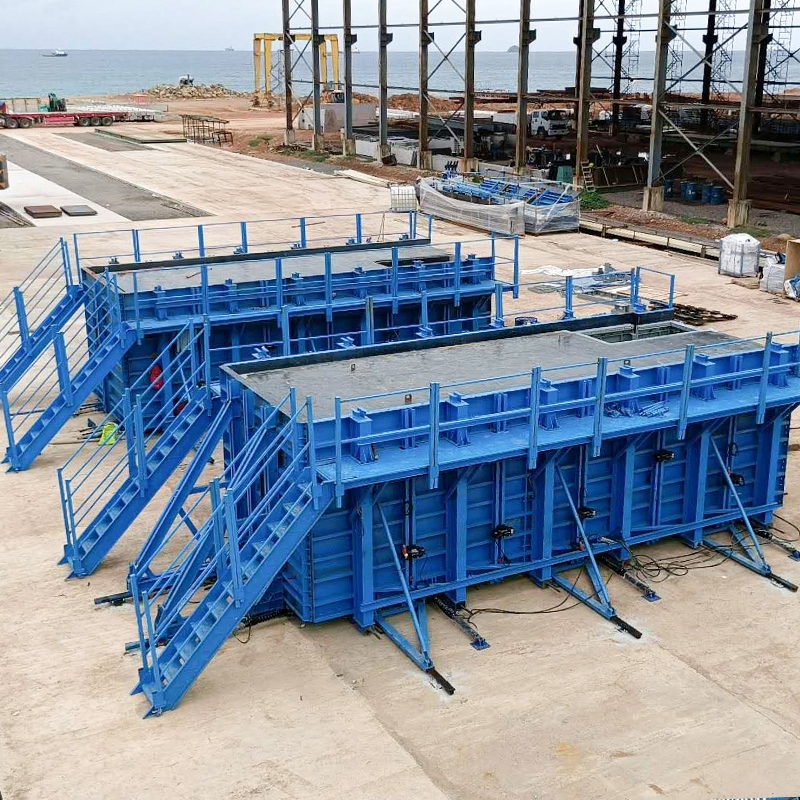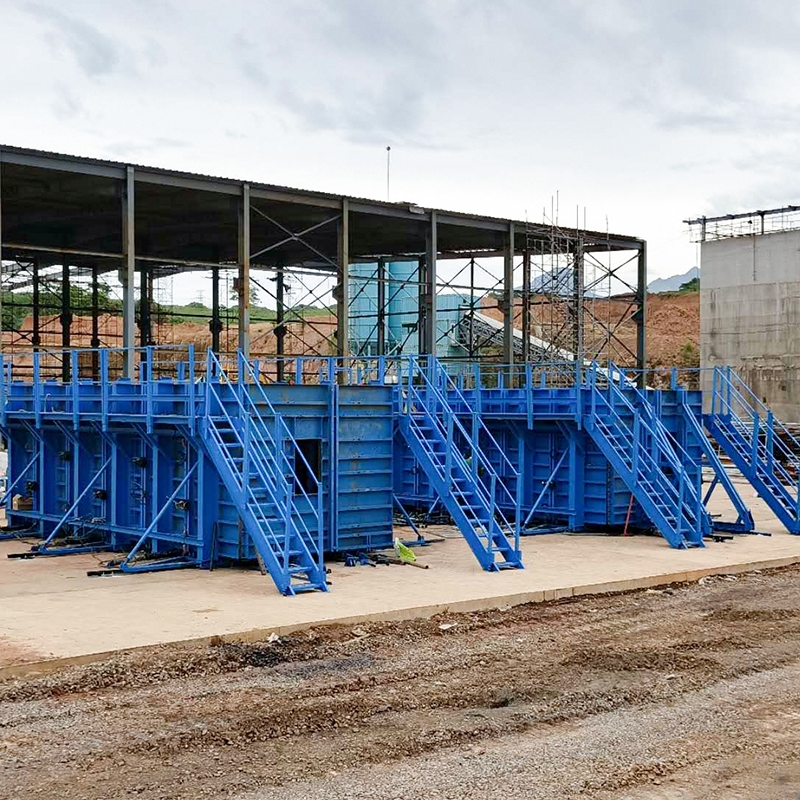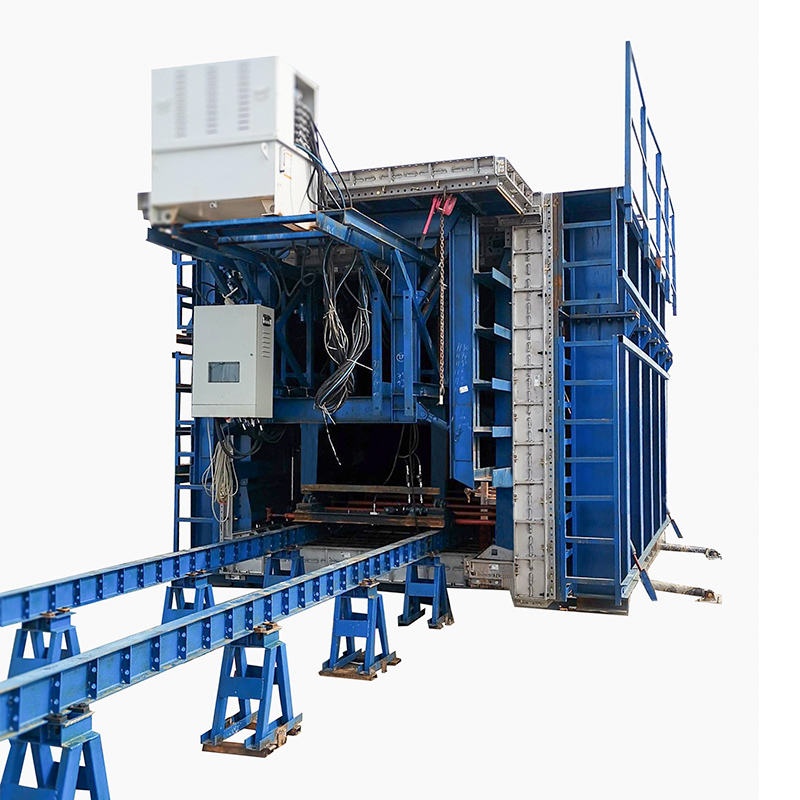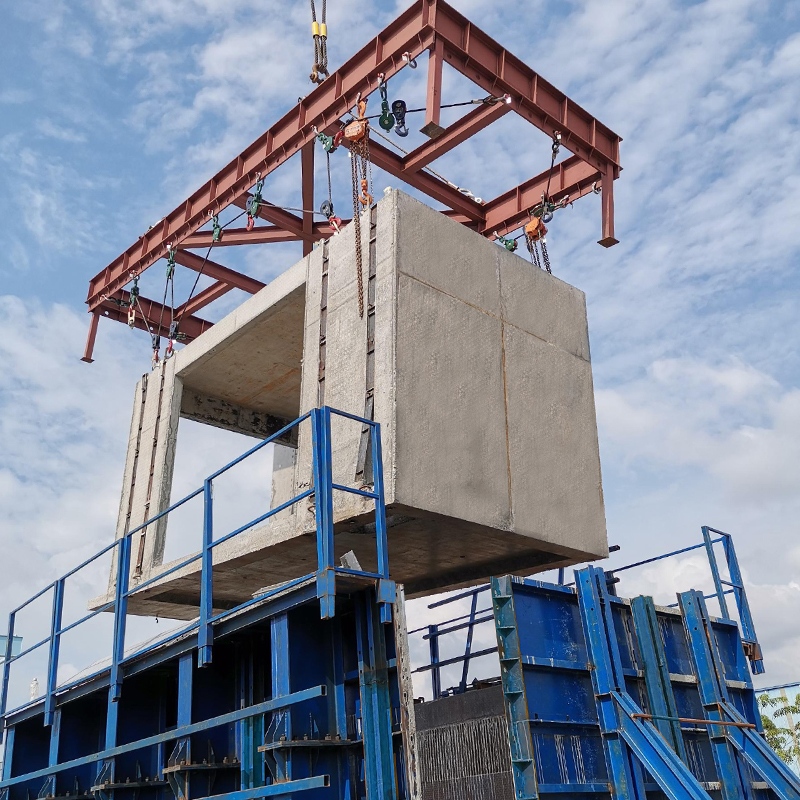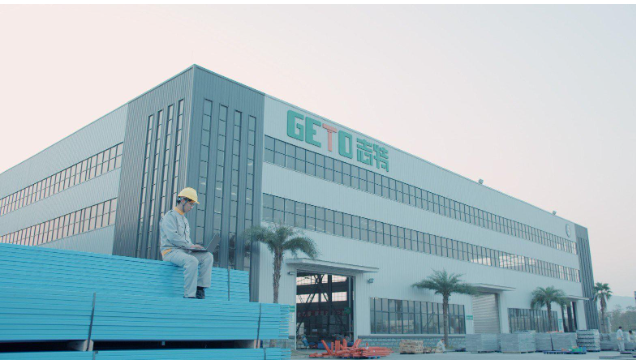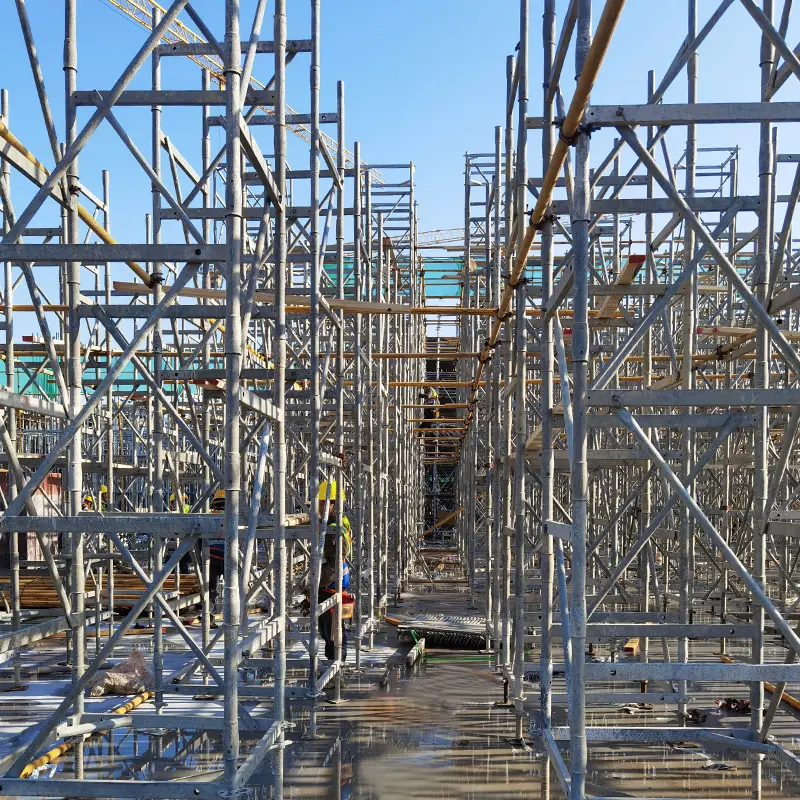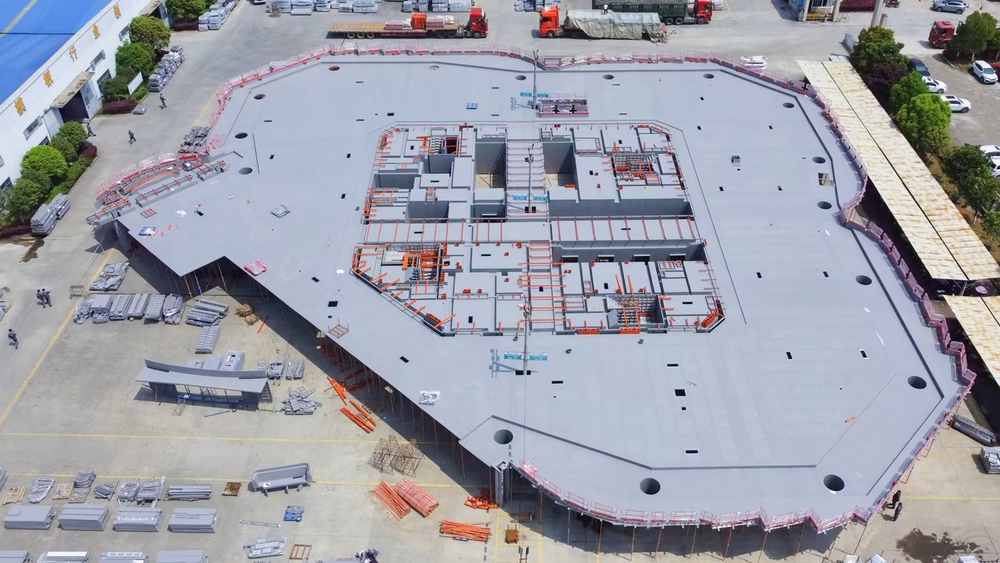As the construction industry moves toward smarter, more efficient solutions, PPVC (Prefabricated Prefinished Volumetric Construction) is taking center stage. At the heart of this innovation lies the PPVC Prefabricated House Mold—a game-changing tool that enables rapid, high-precision building with minimal on-site labor.
In 2025, the demand for Prefabricated House Molds continues to grow, driven by the global push for sustainable, time-saving construction methods. Whether you're a developer, contractor, or prefab manufacturer, understanding the latest advances in PPVC Prefabricated House Mold technology is key to staying ahead in the evolving construction landscape. This guide takes you inside the most advanced systems on the market, helping you build smarter, faster, and stronger than ever before.
What is PPVC?
| 移除 |
is an advanced and efficient building method where entire building modules—including structural components and interior finishes—are manufactured off-site in a controlled factory environment. These fully finished modules are then transported to the construction site for rapid installation, much like assembling building blocks.
This approach significantly improves construction efficiency, shortens project timelines, and reduces on-site disturbances such as dust, noise, and construction waste, making it highly aligned with green building practices. With its advantages in quality control, enhanced safety, and sustainability, it has been widely adopted in residential buildings, hospitals, hotels, and dormitories, and is becoming a key technology driving the future of sustainable construction.
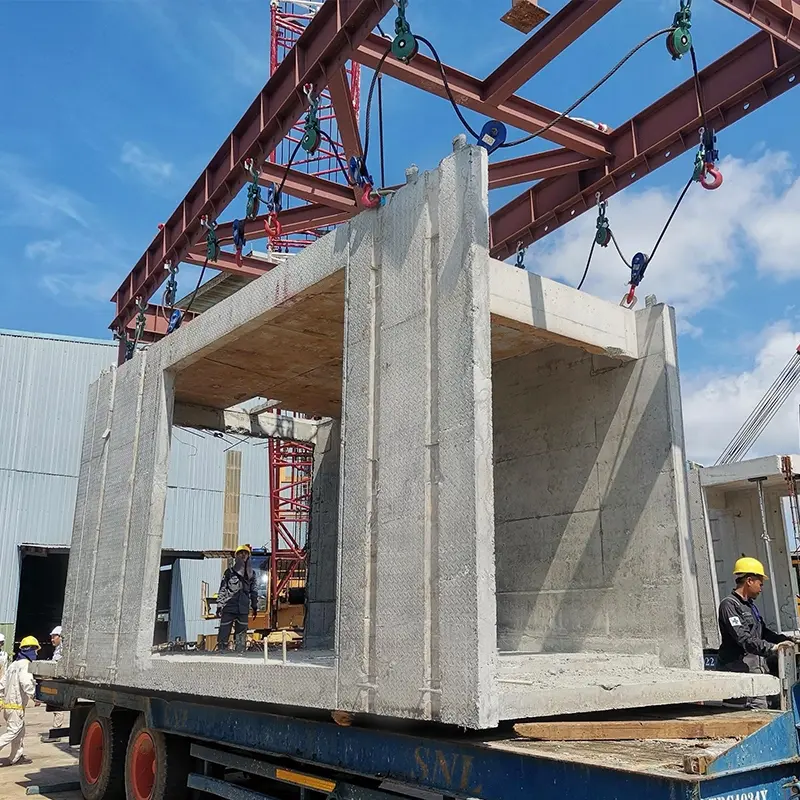
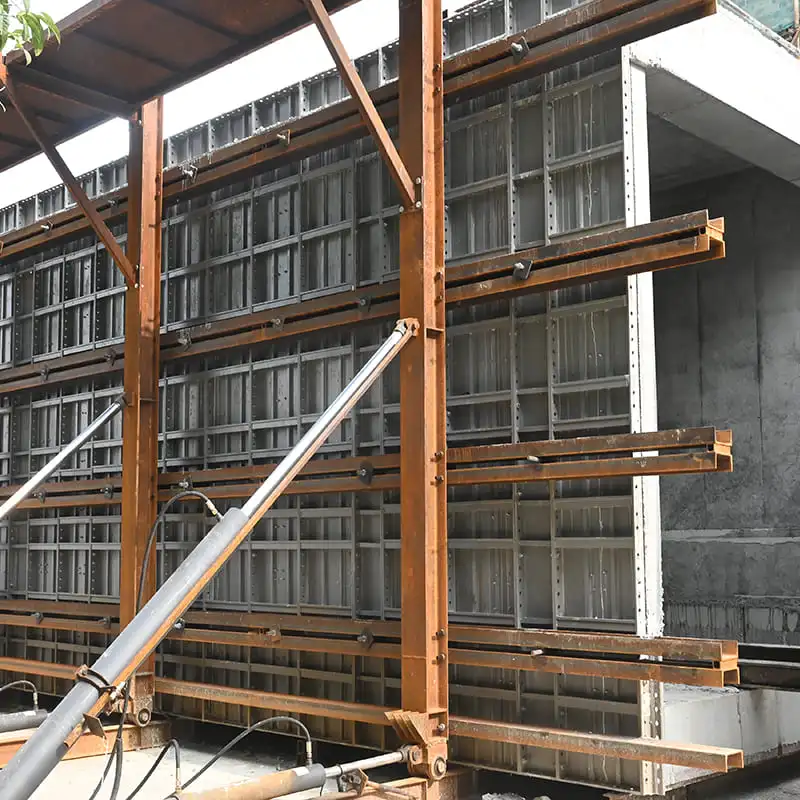
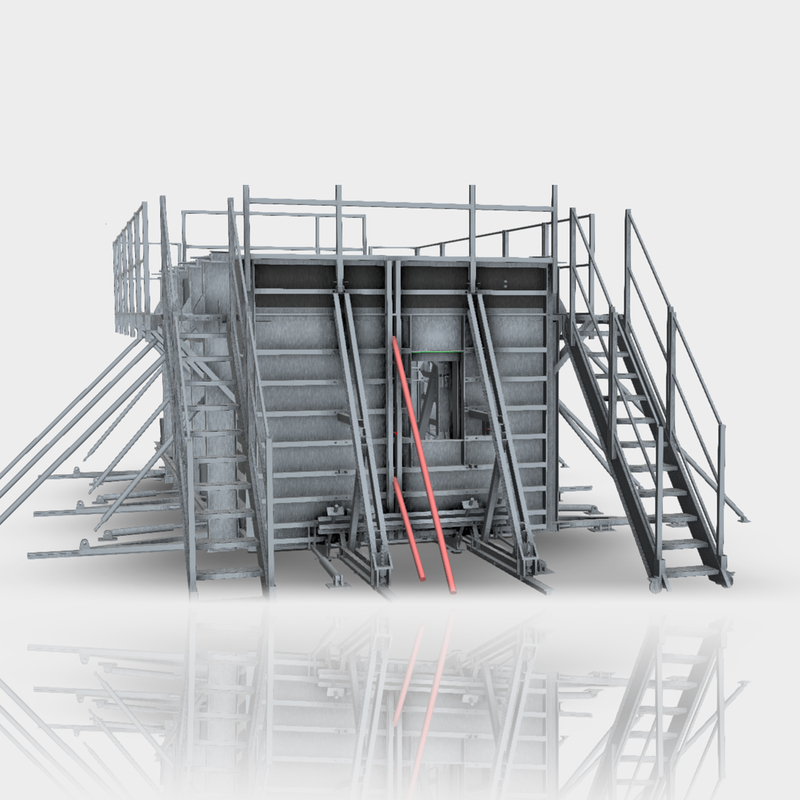
Types of Prefabricated Prefinished Volumetric Construction
1. Steel-Structure PPVC - Precast Concrete Modular Building
Uses steel as the primary structural material. Steel modules are prefabricated in factories, offering high strength, lightweight, and design flexibility. This type is suitable for high-rise buildings and projects requiring large-span spaces.
2. Precast Concrete PPVC - Precast Concrete Modular Building
Mainly uses precast concrete components. Modules are cast and formed in factories, providing excellent fire resistance, sound insulation, and structural stability. It is ideal for buildings with high durability and fire safety requirements.
3. Timber-Structure PPVC
Utilizes industrially processed timber or glued laminated timber as the main structure. It is environmentally friendly and allows for shorter construction cycles, making it suitable for low-rise residential and green building projects.
4. Composite-Material PPVC
Combines multiple materials (such as steel and concrete, timber and metal) to create composite modules that leverage the advantages of each material. This type meets complex design needs and enhances building performance.
Advantages of Prefabricated Prefinished Volumetric Construction
1. Faster Construction Time
Prefabricated Prefinished Volumetric Construction significantly reduces on-site construction time since up to 90% of the building is completed off-site. Modules are delivered ready for assembly, allowing multiple construction activities (foundation work and module fabrication) to proceed in parallel.
2. Consistent Quality and Precision
Modules are manufactured in a factory-controlled environment, ensuring better quality control, higher precision, and fewer defects compared to traditional on-site construction.
3. Reduced Labor Dependency On-Site
Since much of the work is done in the factory, the need for on-site labor is greatly minimized. This is especially advantageous in regions with labor shortages or high labor costs.
4. Improved Safety
Prefabricated Construction reduces the amount of work conducted at height and on congested construction sites, thus lowering the risk of accidents and improving overall site safety.
5. Environmental Sustainability
Factory production minimizes material waste, reduces dust and noise pollution on-site, and supports green building practices. The efficiency of the process also reduces the overall carbon footprint.
6. Better Project Management and Predictability
Off-site manufacturing allows for better planning and less weather dependency. Project timelines become more predictable, and delays due to adverse weather conditions or on-site complications are significantly reduced.
7. Design Flexibility
Modern PPVC systems offer a wide range of customization options in layout, size, interior finishes, and materials. This flexibility makes it suitable for residential, commercial, and institutional projects.
8. Reduced Disruption to Surrounding Communities
Faster assembly and reduced site work mean less noise, dust, and traffic congestion in urban or occupied areas during construction.
Features of PPVC
Prefabricated Prefinished Volumetric Construction is an advanced modular building technology that involves manufacturing complete volumetric modules—such as bedrooms, bathrooms, and kitchens—in a factory setting. These modules come fully finished with structural components, interior fittings, electrical systems, and plumbing, and are then transported to the construction site for rapid assembly.
This method significantly shortens construction timelines—by 30% to 50% compared to traditional methods—while also reducing on-site labor, safety risks, and overall costs. Thanks to the controlled factory environment, Prefabricated Prefinished Volumetric Construction ensures high precision and consistent quality.
It also supports sustainability goals by minimizing construction waste, dust, and noise. Each module is fully completed before delivery, requiring only crane installation on-site. Engineered for strength and durability, PPVC modules can withstand transportation and lifting forces, making them suitable for a wide range of applications including residential, commercial, educational, and healthcare buildings.
PPVC also offers great flexibility in design and customization, supporting both efficiency and architectural creativity.
Application of PPVC
Prefabricated prefabricated composite building is widely used in many fields due to its high efficiency, high quality and sustainable advantages.
In residential buildings, Prefabricated Prefinished Volumetric Construction greatly shortens the on-site construction time by providing pre-finished integral modules, which is suitable for fast-development projects such as apartments, houses and townhouses.
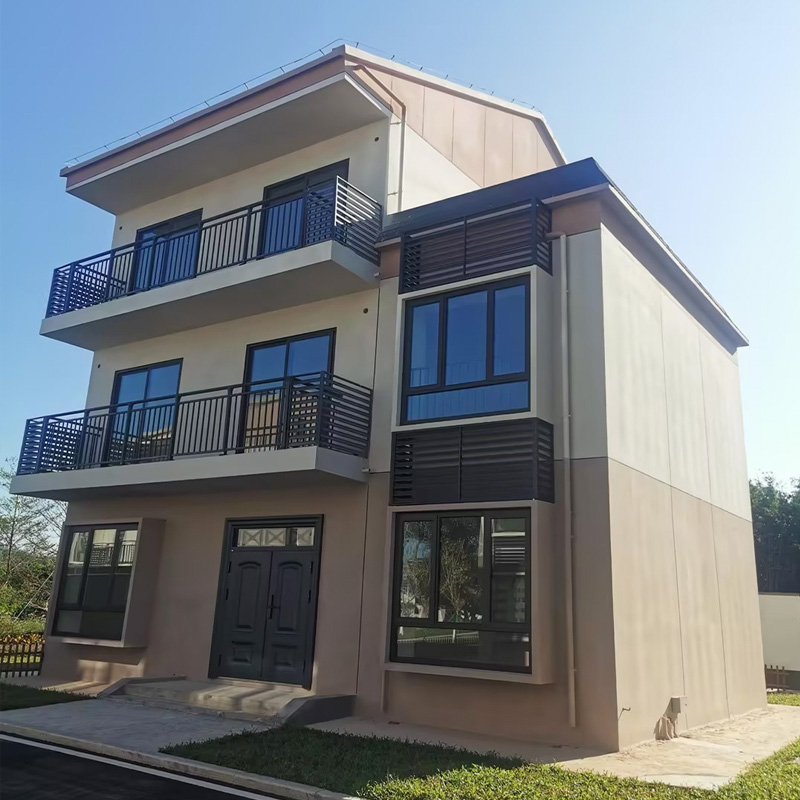
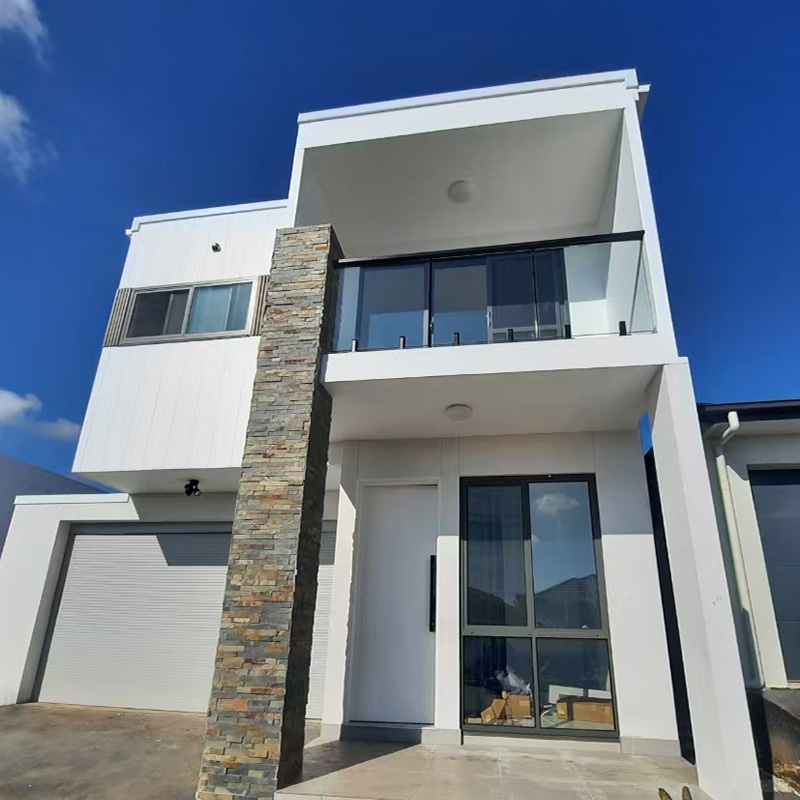
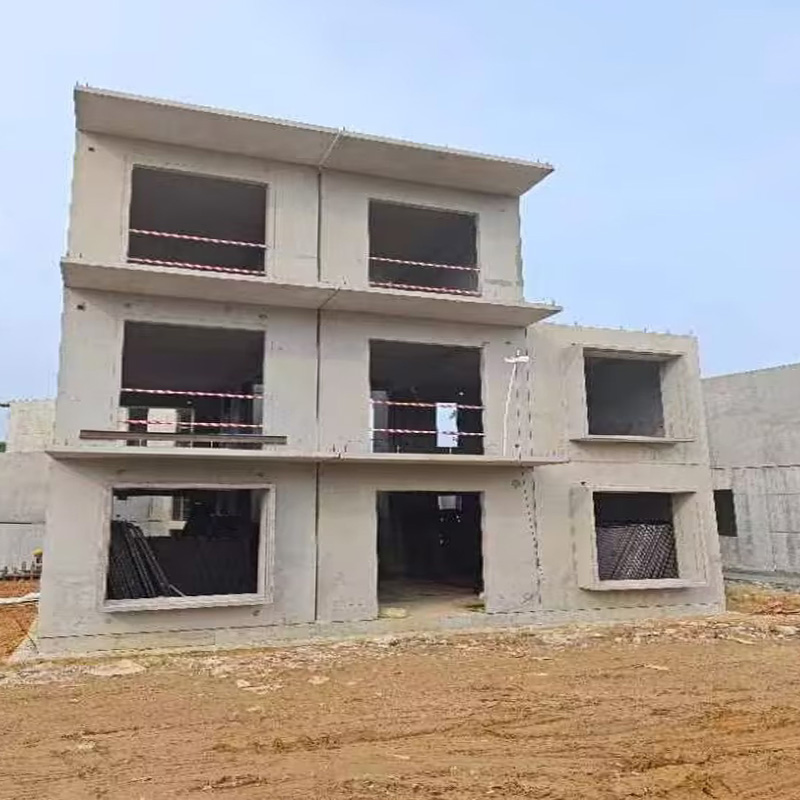
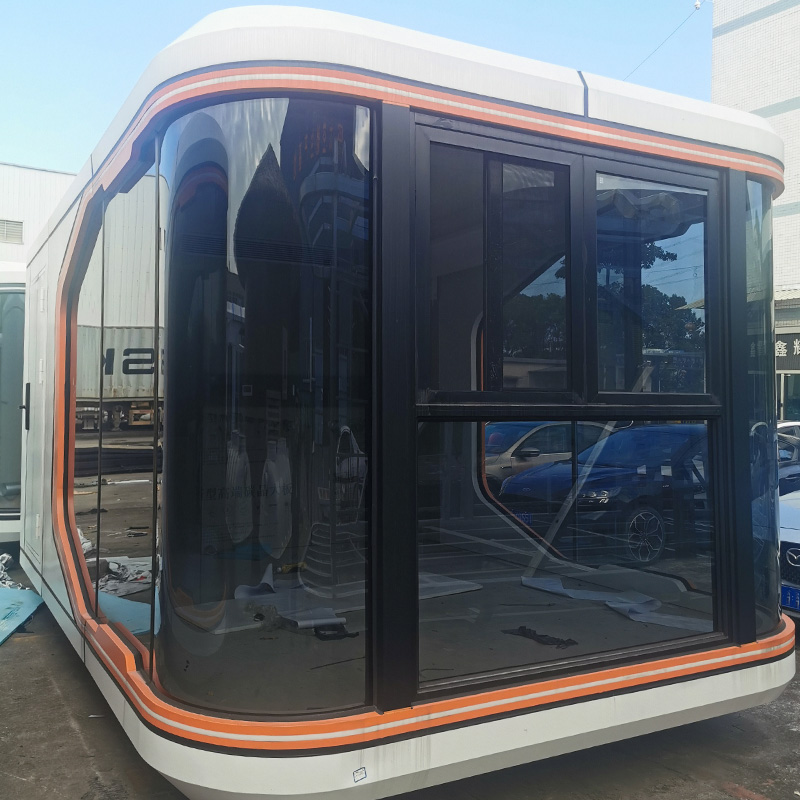
ppvc In residential buildings ppvc In commercial buildings ppvc In education building ppvc In medical facilities
In commercial buildings such as hotels and office buildings, Prefabricated Construction helps to speed up project progress and maintain quality consistency.
The education field uses PPVC to quickly build classrooms and dormitories to reduce interference with campus activities.
In medical facilities, PPVC modules provide a factory-controlled clean environment, improve hygiene and safety, and are suitable for the construction of wards and special areas.
In addition, Prefabricated Construction is also increasingly used in hotel, retail and public infrastructure projects to meet high requirements for construction speed, precision and environmental protection.
Overall, the modular construction method of Prefabricated Construction helps large and complex projects, improves construction efficiency, reduces costs, and promotes the development of green buildings.
What tools or equipment are used when building using PPVC technology?
When building using PPVC technology, PPVC Precast Housing Molds play a crucial role in the construction process. These specialized molds are designed to shape and form the prefabricated volumetric modules that make up the building components. By using these molds, manufacturers can achieve high precision, consistent quality, and efficient production. The molds enable rapid casting of structural elements with smooth finishes, reducing the need for on-site work and accelerating the overall construction timeline.
How does PPVC precast housing molds work? Let's watch the video
Comparison of PPVC With Other Building Technologies
1. Traditional Construction vs. PPVC
Traditional construction involves on-site building from raw materials, which is time-consuming and often affected by weather and labor availability. Prefabricated Construction, on the other hand, uses factory-made modules that are assembled on-site, significantly reducing construction time, improving quality control, and minimizing on-site disruption.
2. Prefabricated Panels vs. PPVC
Prefabricated panel systems involve manufacturing wall or floor panels off-site and assembling them on-site. While this speeds up some parts of construction, it usually requires additional on-site work to connect panels. PPVC provides entire volumetric modules, including walls, floors, ceilings, and internal finishes, leading to faster and more integrated construction.
3. Modular Construction vs. PPVC
Modular construction is a broader term encompassing various prefabrication methods. Prefabricated Modular Building is a specific type of modular construction focusing on complete volumetric units for entire building sections. Compared to some modular methods that produce parts or partial modules, PPVC emphasizes a higher degree of off-site assembly and integration.
4. 3D Printing Construction vs. PPVC
3D printing construction is an emerging technology that builds structures layer by layer on-site, ideal for custom or complex shapes but currently limited in scale and speed. Prefabricated Construction offers a more established, scalable solution for large projects, with proven reliability and faster project turnaround.
Tips for Buying Houses Built with Prefabricated Prefinished Volumetric Construction
Understand Prefabricated Modular Building Technology
Learn what Prefabricated Prefinished Volumetric Construction is and how it differs from traditional construction. Knowing that modules are factory-made and assembled onsite helps you appreciate its quality and speed advantages.
Check Manufacturer Reputation
Research the track record and reputation of the PPVC manufacturer. A reliable manufacturer ensures higher quality control, premium materials, and compliance with safety standards.
Inspect Module Quality
Even though modules are factory-produced, inspect the modules carefully before purchase, paying attention to material durability, surface finishes, and installation of fittings.
Verify Compliance and Certifications
Ensure the Prefabricated Modular house meets local building codes and possesses relevant safety, fire protection, and environmental certifications.
Consider Customization Options
Prefabricated Modular Building often offer design and layout flexibility. Confirm whether the manufacturer provides customization to meet your specific needs.
Confirm Construction Timeline
Prefabricated Prefinished Volumetric Construction typically shortens construction periods. Understand the estimated timeframe and verify it fits your schedule.
Evaluate Long-term Maintenance
Ask about the lifespan and maintenance requirements of the modules to plan for future upkeep.
Review Warranty and After-sales Support
Confirm the warranty coverage and the scope of technical support and after-sales services offered by the manufacturer.
What are the future trends in the construction industry?
Is the construction industry heading for decline? This is a question many people have raised about the construction industry in recent years. However, this is not the case.
Under the wave of digitalization, greening, and intelligence, the construction industry has not only not declined, but is undergoing an unprecedented transformation. The future construction industry is no longer the traditional "reinforced concrete", but a new battlefield where technology and environmental protection are intertwined.
So, what is the future trend of the construction industry? Let's find out.
Green building: from "optional" to "mandatory"
Green building has become an irreversible trend in the construction industry. Globally, green buildings are in a rapid development stage and have become an important force in promoting sustainable development.
Developed countries in Europe and the United States started the construction of green building standard systems more than ten years ago. For example, the LEED certification in the United States and the BREEAM standard in Europe have been widely used in public buildings and commercial real estate.
At the same time, developing countries are also actively responding to global low-carbon goals and accelerating the transformation of green buildings through technology introduction, local innovation, and other means.
According to data released by several authoritative institutions, the global green building market has exceeded one trillion US dollars in 2022, and is expected to maintain an average annual growth rate of more than 10% by 2025.
In terms of policy, governments of various countries generally encourage enterprises and developers to adopt green construction methods through tax incentives, green credit, carbon trading mechanisms and other means.
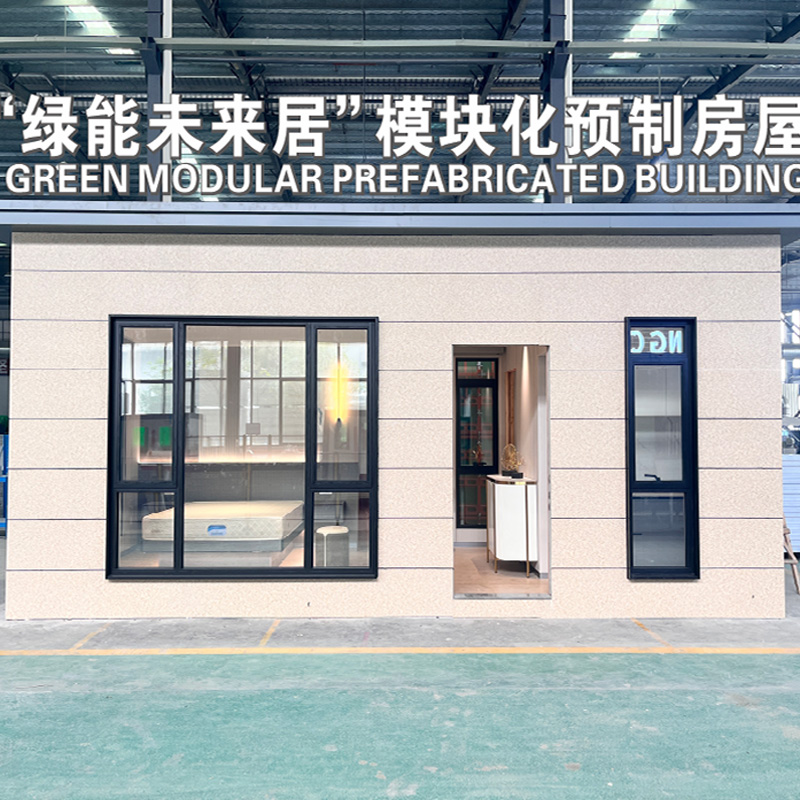
In addition, international organizations such as the United Nations are also promoting the integration of green buildings and sustainable urbanization, bringing more international collaboration and innovative development opportunities to the construction industry.
It can be said that green buildings have become an important fulcrum for the upgrading of the global construction industry and the carbon neutrality strategy.
The core of green buildings lies in energy conservation, emission reduction and sustainable development. Technologies such as ultra-low energy consumption buildings, zero-carbon parks, and building photovoltaic integration (BIPV) are becoming hot spots in the industry.
Taking PPVC as an example, it completes most of the building structure and interior decoration in the factory through modular prefabrication, and then transports it to the site for rapid assembly, greatly reducing the construction period and construction waste.
It not only improves construction efficiency, but also significantly reduces carbon emissions, providing a feasible path and new profit model for the construction industry to achieve green transformation.
Intelligent construction: from "labor-intensive" to "technology empowerment"
Artificial intelligence (AI), Internet of Things (IoT), Building Information Modeling (BIM) and other technologies are reshaping the construction industry. In the next ten years, smart construction sites, robot construction, and digital twins will become standard.
For example, BIM technology can reduce design changes by 30% and shorten construction period by 20%; intelligent robots will gradually replace high-risk and repetitive work and reduce labor costs.
Building industrialization is also an important direction for intelligent construction. The proportion of prefabricated buildings is expected to increase from the current 30% to more than 40%, realizing "building houses like building cars". This not only improves construction efficiency, but also greatly reduces construction waste and promotes the sustainable development of the industry.
FAQ
What is PPVC, and how does it differ from traditional construction?
Prefabricated Prefinished Volumetric Construction (PPVC) is an advanced construction method where entire building modules, including structural components and interior finishes, are manufactured in a controlled factory environment and then assembled on-site. Unlike traditional construction, which relies on on-site building with raw materials and is often delayed by weather or labor issues, PPVC reduces construction time by 30-50%, ensures consistent quality, and minimizes on-site disruptions like noise, dust, and waste.
What types of buildings are suitable for PPVC?
PPVC is highly versatile and can be used for residential buildings (apartments, houses, townhouses), commercial structures (hotels, offices), educational facilities (classrooms, dormitories), medical facilities (wards, specialized areas), and public infrastructure (retail spaces, community centers). It supports both low-rise and high-rise projects, depending on the material used, such as steel or precast concrete.
How does PPVC contribute to sustainability?
PPVC promotes sustainability by minimizing construction waste, dust, and noise through off-site manufacturing. Factory production optimizes material use, reducing the carbon footprint. PPVC also aligns with green building goals, supporting energy-efficient designs and technologies like building photovoltaic integration (BIPV), making it a key contributor to global low-carbon initiatives.
What are PPVC precast housing molds, and why are they important?
PPVC precast housing molds are specialized tools used in factories to create precise, high-quality volumetric modules. These molds ensure consistent structural integrity, smooth finishes, and efficient production, significantly reducing on-site work and accelerating project timelines. They are essential for achieving the speed, precision, and quality that define PPVC technology.
What are the key benefits of choosing a PPVC-built house?
PPVC-built houses offer faster construction (30-50% shorter timelines), consistent quality due to factory-controlled production, reduced labor costs, improved safety, and lower environmental impact. They also provide design flexibility for customized layouts and finishes, while causing minimal disruption to surrounding communities during construction.
How can I ensure the quality of a PPVC-built house?
To ensure quality, research the manufacturer’s reputation and track record. Verify that the modules comply with local building codes and hold certifications for safety, fire protection, and environmental standards. Inspect the modules for material durability, surface finishes, and proper installation of fittings. Additionally, review the warranty and after-sales support offered.
Is PPVC suitable for high-rise buildings?
Yes, PPVC is ideal for high-rise buildings, especially with steel-structure PPVC, which offers lightweight strength and flexibility, or precast concrete PPVC, which provides durability and fire resistance. These options make PPVC suitable for tall residential, commercial, or institutional structures.
How does PPVC compare to other prefabrication methods?
Compared to prefabricated panel systems, which require additional on-site assembly, PPVC delivers fully finished volumetric modules, minimizing on-site work. Unlike general modular construction, PPVC focuses on complete building sections for greater integration. Compared to 3D printing, PPVC is more scalable, faster, and reliable for large-scale projects.
What should I consider when buying a PPVC-built house?
- Understand PPVC technology: Recognize how factory-based production ensures quality and speed.
- Research manufacturer reputation: Choose a trusted manufacturer with a proven track record.
- Inspect module quality: Check material durability, finishes, and fittings.
- Verify certifications: Ensure compliance with local building, safety, and environmental standards.
- Explore customization options: Confirm the availability of personalized layouts and designs.
- Confirm construction timeline: Verify that the schedule aligns with your needs.
- Evaluate maintenance needs: Understand the lifespan and upkeep requirements of the modules.
- Review warranty and support: Check the scope of warranty and after-sales services.
What is the future of PPVC in the construction industry?
PPVC is poised for significant growth as it aligns with global trends in green building and intelligent construction. With the green building market expected to grow at over 10% annually by 2025, PPVC’s efficiency, sustainability, and compatibility with technologies like Building Information Modeling (BIM) and smart construction systems make it a cornerstone of the industry’s transformation toward smarter, greener, and faster construction.


